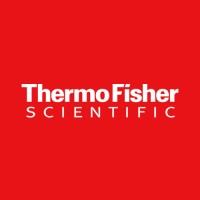CD4 / Qdot 705 / S3.5
Product Details
| Description | CD4 Monoclonal Antibody, Qdot® 705 conjugate (S3.5). The CD4 antigen is involved in the recognition of the type II MHC antigen. It is also a receptor for HIV. It is present on most T helper cells and normal thymocytes. The cytoplasmic portion of CD4 is associated with p56lck tyrosine kinase. CD4 expression is commonly found in human lymph nodes and tonsils. CD44 is a type 1 transmembrane glycoprotein also known as Phagocytic Glycoprotein-1 (pgp-1) and HCAM. CD44 is the receptor for hyaluronate and exists as a large number of different isoforms due to alternative RNA splicing. The major isoform expressed on lymphocytes, myeloid cells, and erythrocytes is a glycosylated type 1 transmembrane protein. Other isoforms contain glycosaminoglycans and are expressed on hematopoietic and non-hematopoietic cells. CD44 is involved in adhesion of leukocytes to endothelial cells, stromal cells, and the extracellular matrix.FACS Assay Dependent | |
|---|---|---|
| Conjugate | Qdot 705 | |
| Clone | S3.5 | |
| Target Species | Human | |
| Applications | FC | |
| Supplier | Thermo Fisher Scientific | |
| Catalog # | Sign in to view product details, citations, and spectra | |
| Size | ||
| Price | ||
| Antigen | ||
| Host | ||
| Isotype |
About CD4
This gene encodes the CD4 membrane glycoprotein of T lymphocytes. The CD4 antigen acts as a coreceptor with the T-cell receptor on the T lymphocyte to recognize antigens displayed by an antigen presenting cell in the context of class II MHC molecules. The CD4 antigen is also a primary receptor for entry of the human immunodeficiency virus through interactions with the HIV Env gp120 subunit. This gene is expressed not only in T lymphocytes, but also in B cells, macrophages, granulocytes, as well as in various regions of the brain. The protein functions to initiate or augment the early phase of T-cell activation, and may function as an important mediator of indirect neuronal damage in infectious and immune-mediated diseases of the central nervous system. Multiple alternatively spliced transcript variants encoding different isoforms have been identified in this gene. [provided by RefSeq, May 2020]
This gene encodes the CD4 membrane glycoprotein of T lymphocytes. The CD4 antigen acts as a coreceptor with the T-cell receptor on the T lymphocyte to recognize antigens displayed by an antigen presenting cell in the context of class II MHC molecules. The CD4 antigen is also a primary receptor for entry of the human immunodeficiency virus through interactions with the HIV Env gp120 subunit. This gene is expressed not only in T lymphocytes, but also in B cells, macrophages, granulocytes, as well as in various regions of the brain. The protein functions to initiate or augment the early phase of T-cell activation, and may function as an important mediator of indirect neuronal damage in infectious and immune-mediated diseases of the central nervous system. Multiple alternatively spliced transcript variants encoding different isoforms have been identified in this gene. [provided by RefSeq, May 2020]
About Qdot 705
Qdot® 705 from Thermo Fisher Scientific is an inorganic nanocrystal with a surface functionalized to allow antibodies and biomolecules to be cross-linked. It is most efficiently excited between 320-405 nm but is capable of excitation across every laser less than its emission peak. It is significantly brighter and more photostable than traditional organic fluorophores, making it still useful for fluorescence microscopy, however its size and solubility issues make it a challenge to use in flow cytometry. In spectral flow cytometry it may still prove useful due to its very unique spectral characteristics
Qdot® 705 from Thermo Fisher Scientific is an inorganic nanocrystal with a surface functionalized to allow antibodies and biomolecules to be cross-linked. It is most efficiently excited between 320-405 nm but is capable of excitation across every laser less than its emission peak. It is significantly brighter and more photostable than traditional organic fluorophores, making it still useful for fluorescence microscopy, however its size and solubility issues make it a challenge to use in flow cytometry. In spectral flow cytometry it may still prove useful due to its very unique spectral characteristics
Experiment Design Tools
Panel Builders
Looking to design a Microscopy or Flow Cytometry experiment?
Validation References
Reviews & Ratings
| Reviews |
|---|
Looking for more options?
6549 CD4 antibodies from over 61 suppliers available with over 260 conjugates.





